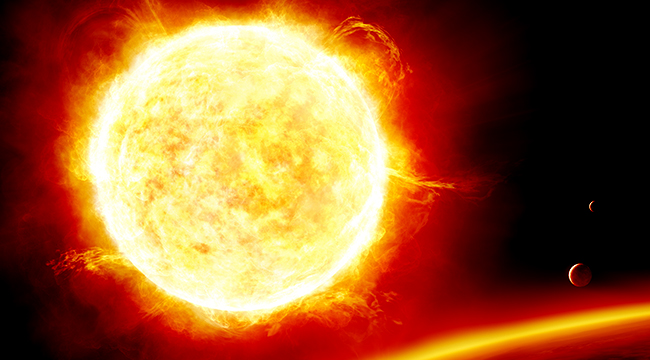
As if the weather wasn’t bad enough, now the sun is out to make our lives miserable with a massive solar storm that will disrupt communications and give us headaches both literally and metaphorically. At least, that seems to be the case if you listen to the headlines:



Everyone is panicking because they’re not understanding a report by The Lebedev Physical Institute of the Russian Academy of Sciences, a highly respected Russian scientific organization. They, like the National Oceanic and Atmospheric Administration, reported a slight uptick in solar activity this Sunday, basically just the solar equivalent of a light breeze, called a G1. But since “Russians predict minor solar bump you won’t notice” isn’t a great headline, everybody assumed Magnetic Death (AKA a G5) was coming for us all.
Still, the risk of a solar storm isn’t just headline fodder. Geomagnetic storms are a real phenomenon, and they can cause some strange results. In 1859, a geomagnetic storm dumped so much energy into the atmosphere that telegraph systems worked without electricity. In 1989, a geomagnetic storm knocked out power in Quebec. So while one isn’t in the cards just yet, it’s worth knowing what they are, so you can be ready for them when they do arrive.
- A geomagnetic storm is much like a windstorm, except with particles of energy: The sun is constantly emitting not just light, but a whole spectrum of radiation. That radiation is usually kept close to the sun thanks to its enormous gravity, but it can break free from the sun and fly off into the universe, called a “coronal mass ejection,” or CME. If the Earth happens to be in the way, it’ll deform the Earth’s magnetic field.
- When the Earth’s magnetic field is knocked off-kilter, things get interesting fast: We rely on a stable magnetic field on Earth for communications and navigation; compasses and long-range radio temporarily stop working, or work oddly, in solar storms. Also, a giant magnetic blast can destroy satellites and sensitive electrical equipment; it can magnetize oil pipelines and dramatically weaken them, and knock out power grids by pumping in more energy than they can handle.
- As a result, government authorities keep a close eye on space weather, and if something bad is coming you’ll get plenty of warning: Governments and militaries don’t want downed communications and destroyed satellites any more than we do, so they keep a very close eye on the sun. If a massive solar storm was coming, you’d have plenty of notice, because it would have the potential to be an enormous disaster. Fortunately, it appears that’s not going to be a concern for a while; the sun has actually been exceptionally quiet, and we may be entering a period of a Grand Solar Minimum (which brings its own set of problems).
- If a magnetic storm is on the way, you’ll have time to prepare, and it’s much like preparing for any other disaster: You’ll want to have everything you need on hand; potable water, a full tank of gas, sturdy walking boots, batteries, and the like. If you want to get particularly elaborate, you can buy or build a Faraday cage to keep your valuable data and electronics in. But if a magnetic pulse is about to turn the entire world into something out of Mad Max, world governments are not going to keep that to themselves. Also remember, we keep a close eye on the Sun, and coronal mass ejections don’t always go flying towards the Earth. So when one heads ur way, we’re going to have at least twelve hours to several days to clean out the grocery stores, protect the family photos, and generally hunker down.
- As for medical effects, well, nobody really knows: Solar storms are bad for astronauts because they’re exposed to more radiation. But the health effects of the sun squishing the Earth’s magnetosphere for those of us on solid ground are a bit up in the air. There’s a lot of theory — ranging from being minimal effects to being really bad news — but realistically you’ll probably be sheltering from the brunt of the storm anyway.
- But at least there’s a upside to the sun blast the Earth with magnetism: It looks really pretty: Auroras are caused by highly charged particles hitting the Earth’s atmosphere, so even if communications are destroyed, banks are rendered useless, and human society is forever changed, at least it’ll be a heck of a show.
